How to make a cool Christmas tree bubble wand – and learn about bubble physics though play. Fun Christmas STEM activity for kids!
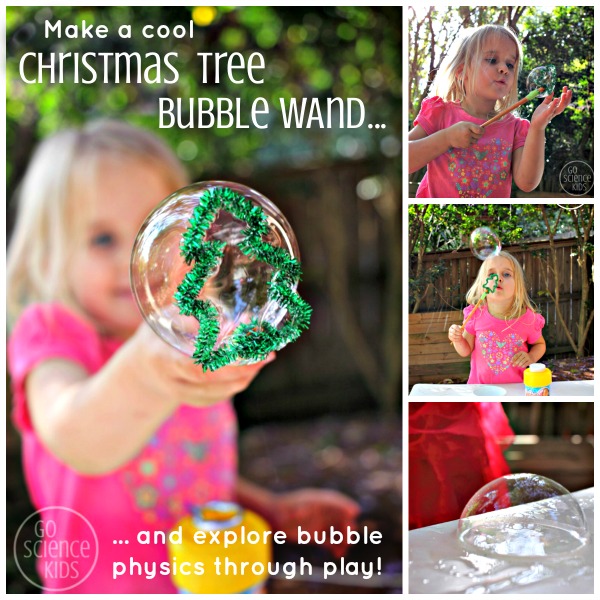
We’ve been playing with bubbles a lot this year. We’ve worked how to make quick and easy DIY bubble wands, so we can theme our wands to match the occasion!
Each time we’ve made our own bubble wands, we’ve had a chance to learn a little more about bubble physics, and what makes them take a particular shape.
Plus, bubbles are fun!
Related: We’ve also made geometric shapes bubble wands, Easter egg bubble wands and heart bubble wands….
Suitable for
Bubbles are fun for any age! Babies and younger toddlers are usually entranced with catching bubbles, rather than the implement used to make them, so this activity is probably best for the preschooler and kindergarten / early primary school age group. Bumble Bee was 4 and Jewel was 6 when we did this.
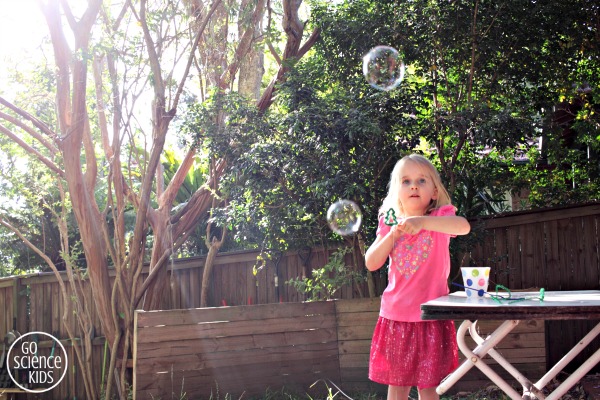
How to make a DIY Christmas Tree Bubble Wand
You need:
- 12″ x 6mm sparkly metallic green pipe cleaner
- 12″ x 6mm furry green pipe cleaner
- chopsticks
- green tape
- bubble mix solution
- a cup
and/or
We used two different types of pipe cleaners – a sparkly one and a furry one – to make a two different looking trees. They work equally well (although aesthetically I think the girls preferred the sparkly one).
Here’s how to make them:
- Fold the pipe cleaner in half. This middle point will become the top of your Christmas tree.
- Bend into a Christmas tree shape, with both ends joining in the middle of the base of the tree.
- Weave the remaining pipe cleaner around the end of chopstick.
- Wrap tape to secure.
- Pour bubble mix into a cup.
- Ask your child to guess what shape bubbles your bubble wand will make.
- Dip your bubble wand, and blow!
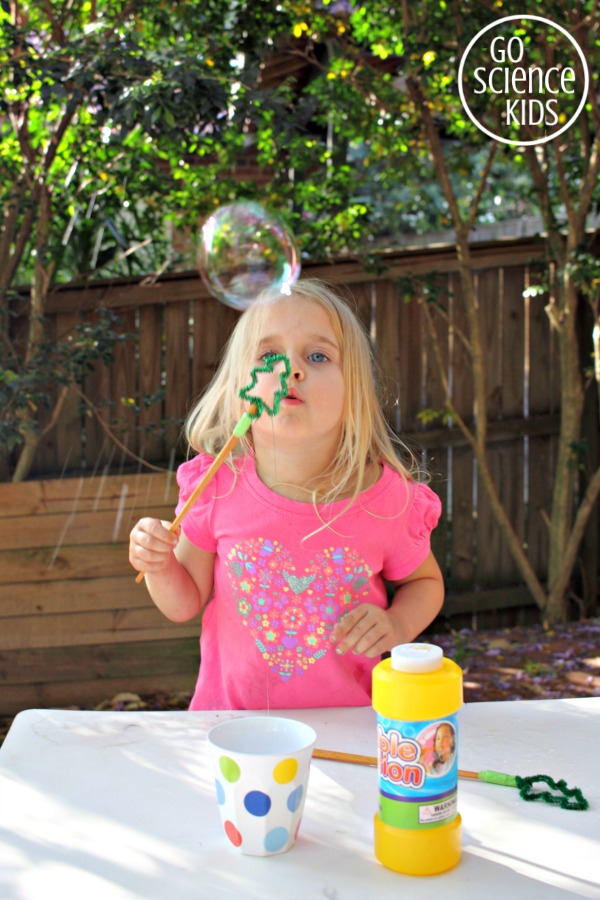
Four year old Bumble Bee initially thought the bubbles would be Christmas tree shape, and then quickly revised her hypothesis when she saw that they were round. She discovered that after blowing a few bubbles into the air, she could then use the bubble wand to catch the bubbles again and study them!
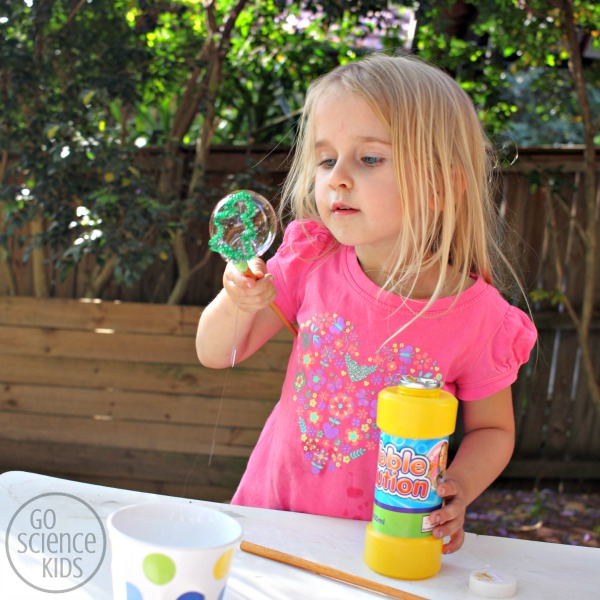
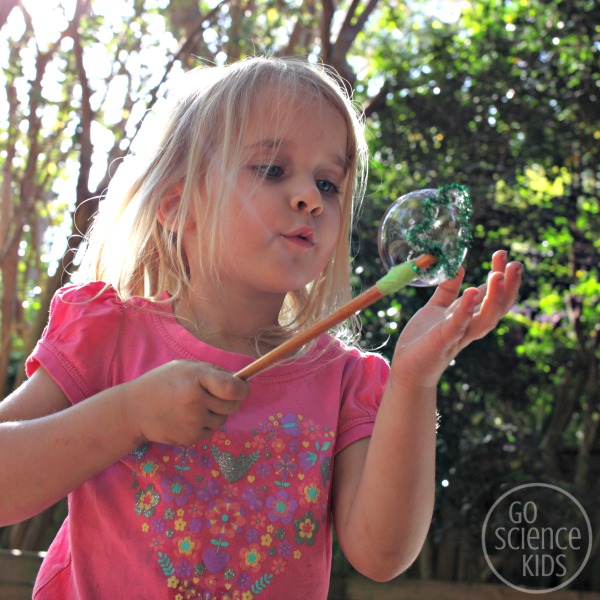

We talked about how bubbles are made up of both bubble mixture and air.
The bubble shape is called a sphere, and the outside of the sphere is the bubble mixture, and the inside is the air that she blew.
When her older sister Jewel (6 years old) came out to join us, we took the bubble physics explanation a little further.
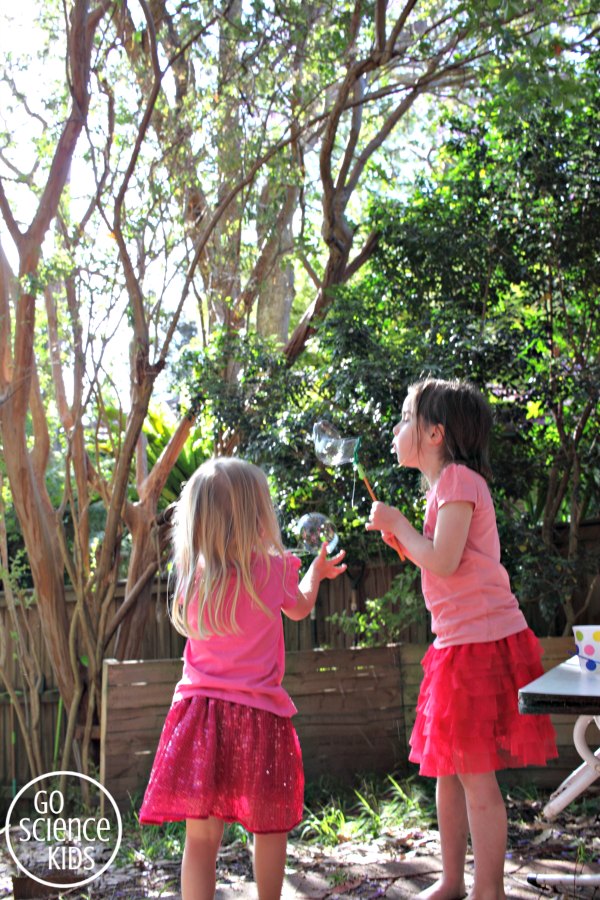
We talked about how there is air all around us, even though you can’t see it. When a bubble floats through the air, the air that is inside the bubble pushes out, and the air outside the bubble pushes in. That’s why it is a round shape. If there were pointy bits (like if it were still Christmas tree shaped), then the inside air forces and the outside air forces wouldn’t balance each other out. The outside air forces would push on it until the bubble was round again.
Jewel noticed that the bubble changes shape if it lands on the (very wet & soapy) table.
“It’s a semi-sphere!”, she cried.
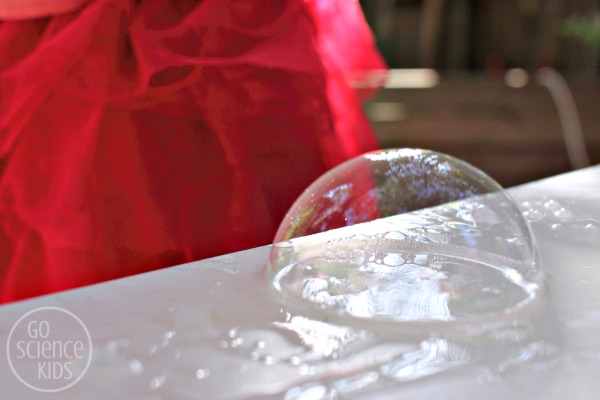
We talked about how the table acts as another force, and that whilst the part of the bubble against the table is flat, the part of the bubble that is pushing up against the outside air is still round.
Jewel wanted to see what would happen if she added another bubble to this first one.
We noticed that the parts of the bubble that were touching something else (like another bubble, or the table) were flat, but the parts that were exposed to the air remained curved.
We talked about how, if you had a bunch of bubbles joined together on each side, you could create a middle bubble that was flat on all sides, like a cube.
Next Jewel tried to see how big a bubble structure she could make. Her record was eight bubbles. It’s not easy though, as the bubbles refused to stack, and sometimes when she added a new bubble, the existing bubbles would join together and make one big one!
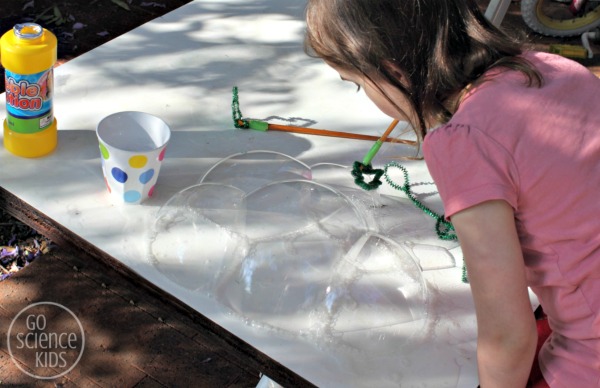
I love how we’ve done this activity a few times now, and we’ve been able to revisit our prior knowledge, and expand upon it, each time. Bee is still quite a way off understanding about forces just yet, but it seems that Jewel is starting to ‘get’ it.
Fun Science
Our (store-bought) bubble mix is made up of (mostly) soap and water. The soap makes the surface tension of water weaker than normal, and also forms a very thin skin (or film) that is flexible, perfect for making bubbles.
Bubbles are actually a film of soapy water with air trapped inside. There are two forces occurring here: the air inside the bubble is pushing out, whilst at the same time, the soapy film and the outside air, are pushing in. To balance these forces, the soapy film assumes the smallest surface area it can, and that shape (in the absence of other forces) just happens to be a sphere.
Therefore, in the absence of other forces, bubbles that float in air are always round, regardless of the shape of the bubble wand used.
I wonder what shape a bubble would be in space???
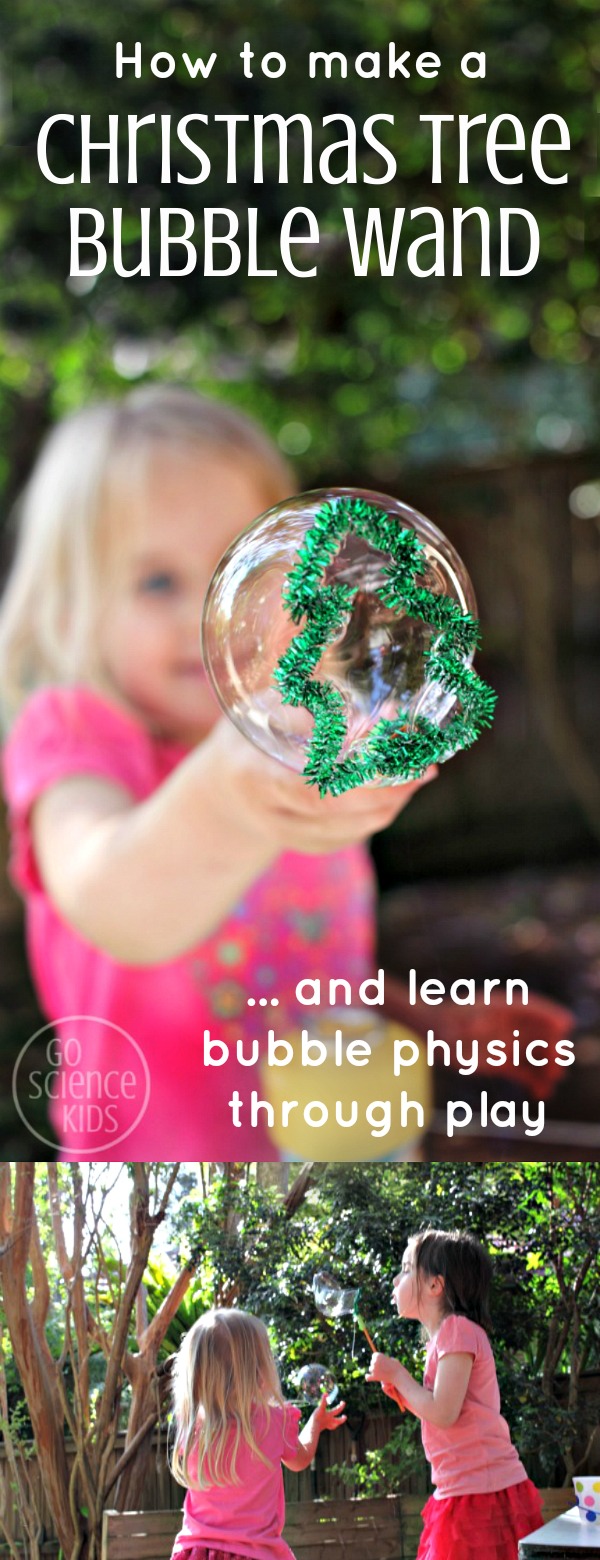
For more Christmas-themed fun, check out our Christmas Science page, including:
- How to make Borax crystal candy cane ornaments,
- How to make a salt crystal ‘snowy’ tree ornament. (This is a great one for younger kids).
For more physics fun, check out our Physics Experiments for Kids page, including:
- DIY shape bubble wands, heart bubble wands and Easter egg bubble wands,
- How to make a DIY pulley for the loungeroom stairs,
- Design a magnet maze,
- Play around with refraction of light.
You might also like to follow our Go Science Kids, Fun Science for Kids and Christmas Science Projects for Kids boards on Pinterest.
And, of course, you can always subscribe to our newsletter, to receive all our latest activities straight in your Inbox. We’d love to have you join us!
* This post contains affiliate link(s) to similar products used. An affiliate link means I may earn a referral fee or commission if you make a purchase through my link, without any extra cost to you. It helps to keep this little project afloat. Thank you so much for your support.

#
This is pretty cool. Looks like a lot of fun.
#
Thanks Renee!
#
Having fun while learning – covers both things.
Good backyard activity.
PS, cute kid!
#
Thanks!